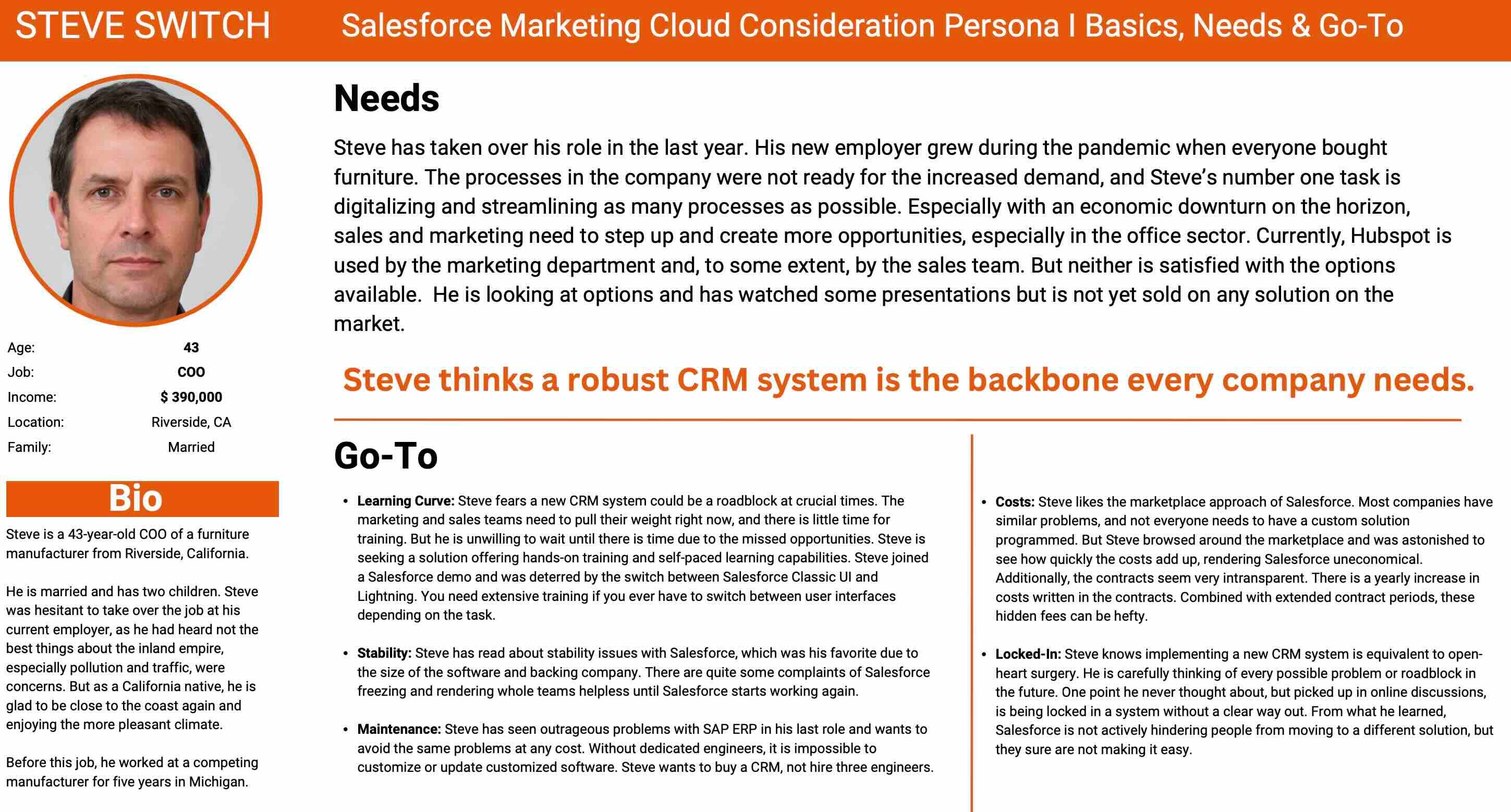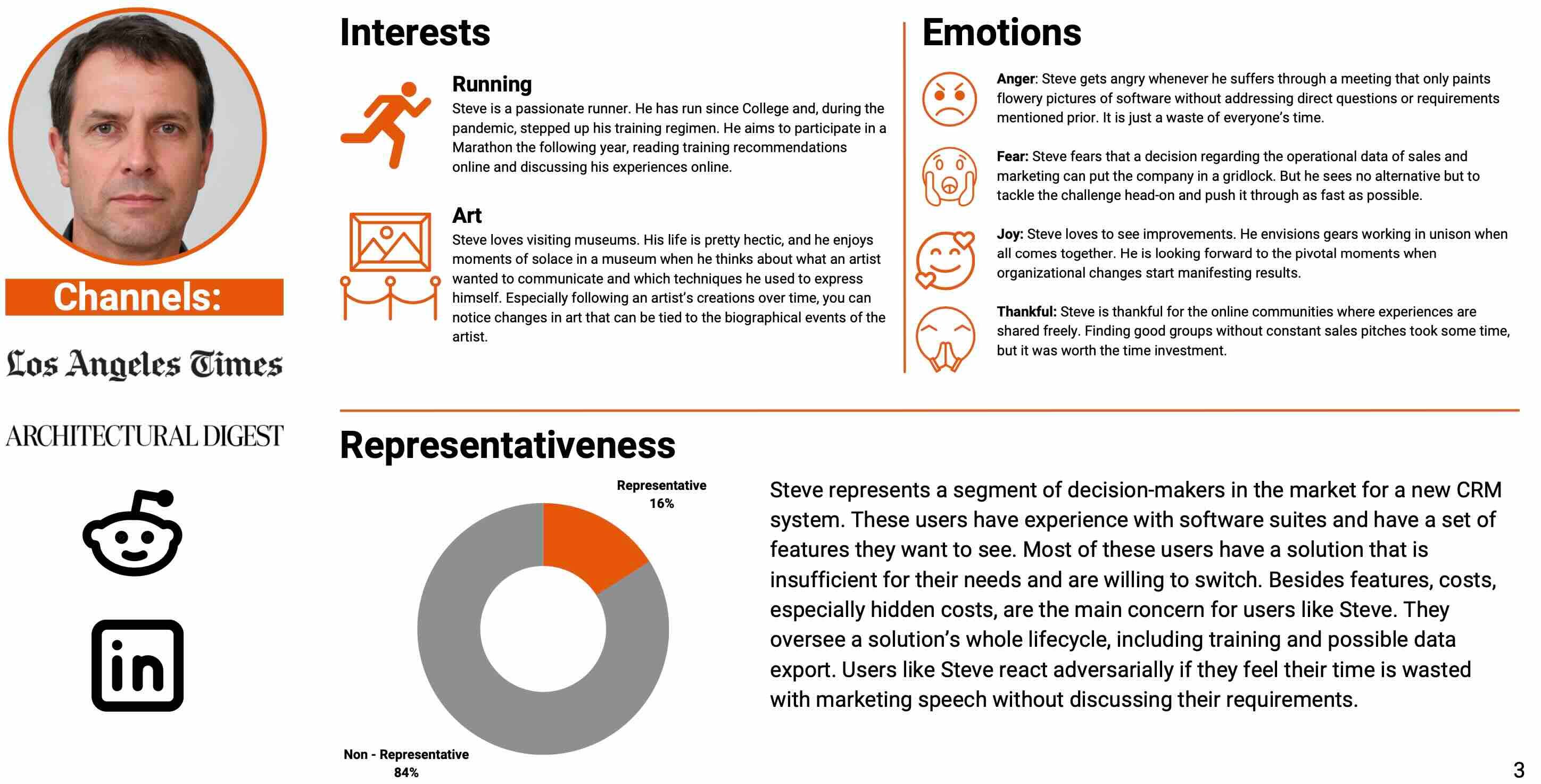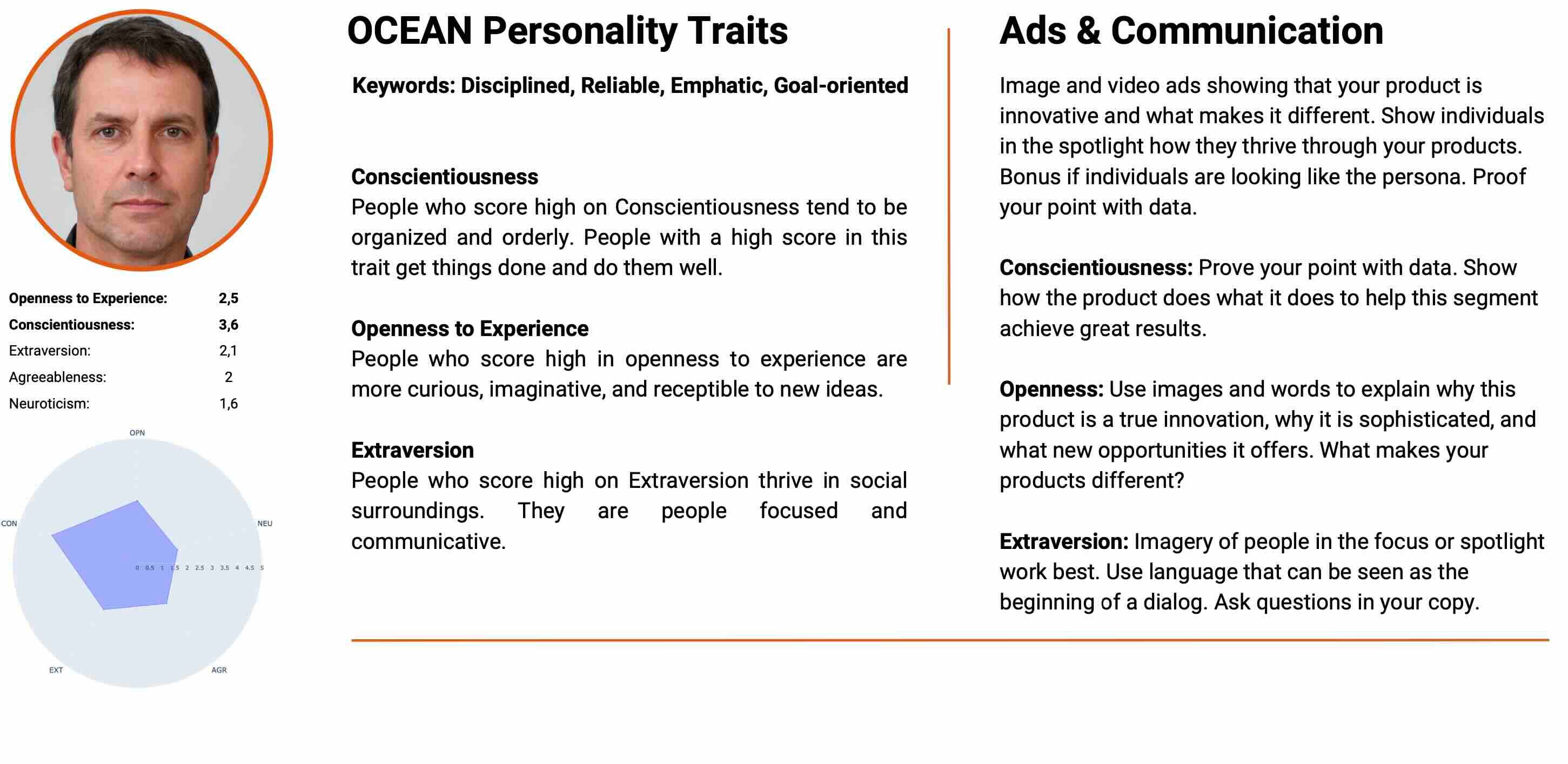Buyer Persona Creation with AI Part 3: The Power of Knowledge Graphs & Hidden Challenges

Last, but not least, I want to share the outcome of a proprietary AI model that gathered public data on Salesforce Marketing Cloud users created a specific Knowledge Graph, for this case, and generated the biggest customer cluster.
Tired of reading? We got you!

When investigating these sections you will realize already a few differences. First, the demographics seem to match as well and the need section is truly built around the specific Salesforce case. Also looking at the go-tos/ requested features, rather than just naming generic product components, this profile tells you exactly what this persona needs to hear and understand. Marketers can use this information to exactly tailor the messaging and focus on the requirements of that specific persona.

In these sections, you will see that the emotions are closely related to the topic of CRM systems and that the representation section is much smaller than in the previous examples. As mentioned previously, any customer segment larger than 20% should be seen with skepticism.

Last but not least, you will see here what personality model this AI uses and provides a clear understanding of the customer segments' personality traits along with clear communication strategies and ad preferences that match these exact traits.
Challenges and hurdles of AI-based persona creation
Through AI, many historic challenges can be overcome, such as a lack of analytical capabilities. Nevertheless, when following the AI approach, stakeholders must be aware of certain challenges that require careful attention.
Bias in Training Data
Bias in training data occurs when historical data used to train AI models reflects existing societal biases. This can result in personas that reinforce stereotypes or fail to represent the diverse range of users accurately. Overcoming this challenge requires diligent efforts to identify and rectify biases in the data, ensuring that the resulting personas are fair and unbiased representations of the target audience.
Dynamic User Preferences
User preferences, behaviors, and market trends are dynamic and can change rapidly. AI models trained on historical data may struggle to adapt to evolving user landscapes, leading to personas that quickly become outdated. This is also the biggest challenge of public LLMs such as ChatGPT or PaLM 2 since they are trained on outdated data. Addressing this challenge involves implementing mechanisms for continuous monitoring, updating, and iterating on personas to ensure they align with current user preferences and market trends.
Privacy Concerns
Using AI to process large amounts of personal data raises privacy concerns. Ensuring compliance with data protection regulations is paramount. Striking a balance between delivering personalized experiences and safeguarding user privacy requires robust data governance practices, transparent communication with users, and adherence to privacy laws to build trust and maintain ethical standards. Especially with the European AI Act coming into effect, many organizations struggle to understand what is allowed and what is not.
Emotional Nuance
AI models may struggle to capture the depth of human emotions and understand the nuanced motivations behind purchasing decisions. Creating buyer personas often involves qualitative insights gained through human interaction, interviews, and empathy, which AI may find challenging to replicate. However, especially over the past 12 months, certain proprietary models can now detect and analyze emotions and personal values.
Overreliance on Quantitative Data
Overemphasizing quantitative data without considering qualitative insights can lead to incomplete and potentially inaccurate personas. While AI excels in processing large datasets, understanding user behaviors requires a nuanced approach considering qualitative elements. Balancing quantitative and qualitative data sources is crucial for creating comprehensive and accurate buyer personas.
Lack of Context Understanding
Some AI models may struggle to grasp the context-dependent aspects of user behavior. Context is crucial for accurately interpreting user actions and motivations. To overcome this, Knowledge Graphs should be implemented to understand the context of each individual case.
Rapid Persona Obsolescence
As market dynamics change, personas can quickly become obsolete. AI-generated personas may not adapt swiftly enough to evolving trends. Mitigating this challenge involves establishing agile processes for persona updates, continuously monitoring market shifts, and incorporating real-time data to ensure personas remain relevant over time. This was also one of the biggest problems pre-AI, and certainly, AI helps to tackle this. However, even the AI needs to be monitored and continuously fed with new data to stay relevant.
Interpreting Cultural Influences
Cultural nuances play a significant role in shaping consumer behaviors. AI may struggle to interpret these nuances accurately, leading to personas that lack cultural sensitivity. Addressing this challenge requires a nuanced understanding of diverse cultural influences and incorporating this understanding into the persona-creation process to ensure cultural relevance and authenticity. For instance, many third-party providers do not even let you choose a region, which makes it difficult to detect these cultural differences.
Final remarks
I didn't try to burst someone's bubble by saying that simply typing in a prompt in a public LLM won't be the solution. Yes, AI makes all our lives easier and will continue to do so but should be handled cautiously. Having data sources rigorously monitored and collected is only the first step. Especially, when you sorely rely on public data, validation becomes hard since crosschecking data sources is challenging.
